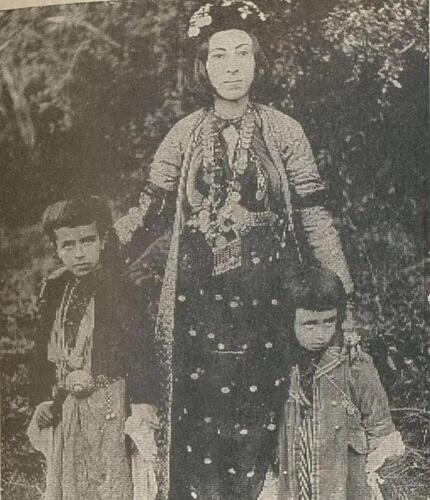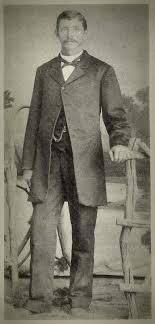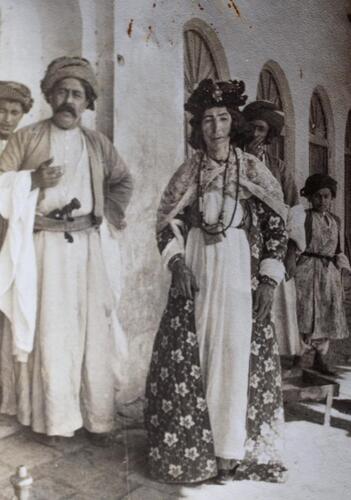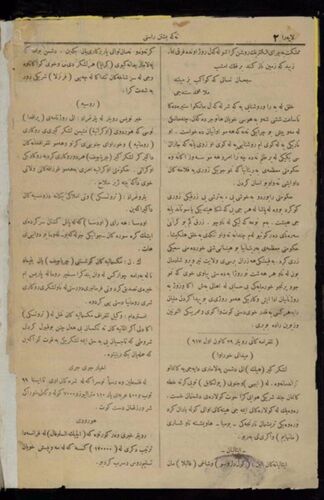In the Middle East, the countries where the colonialist states wanted to face their people in a modern way and dominate their lands were those countries that possessed oil sources. One of them was a large part of the Ottoman Empire, especially that part that is now known as Iraq and the Southern part of Kurdistan. Mosul Wilayat or a large portion of the Southern part of Kurdistan attracted the colonialist powers majorly during the 20th century due to possessing natural resources, particularly oil. Britain had a long term plan for occupying this part of land. This policy of them played a role in dividing Kurdistan. A policy which was planned to protect British interests in Mosul and a large part of the Southern part of Kurdistan where oil had been discovered. However, this planning was not a one-day plan. The British sent their experts and advisors to this area to know it well. In literary history, we come across one of these British advisors' names. This British advisor who had developed the British policy in the Southern part of Kurdistan was mentioned for the first time in Tahir Bag Jaff's divan. In that book we get familiar with a name, Majorson". What is mentioned in Tahir Bag's divan is that Majorson was a British man and had stayed in "Adila Khan's" court for a while but later they realize he was British so he left the court.

Enhancing our knowledge about Majorson clarifies more things for us which will be pointed out. In fact, Majorson's name was "Major Ely Bannister Soane". He was a high rank officer in the British Army. In addition to being a political officer, Bannister Soane was also a writer and linguist. He was born in 1881 in Britain and died in 1923 after 41 years in Britain. Let us see what kind of relationship this linguist, officer, and advisor of Britain has with the Kurds.

In 1902, the British army sent Bannister Soane to one of the Iranian banks to work there as a banker and learn the Persian language at the same time and get familiar with the other local languages as well as learn about the social and political details of Iran. In order to get closer to the people of this area, the British attempted to show their cultural empathy with them. Thus, Bannister Soane declared that he had changed his religion from Christianity to Islam in 1905. In the same year, he was commanded to visit the western parts of Iran and the northern parts of Iraq which were the East and South parts of Kurdistan as a tourist. Bannister Soane resigned from his job as a banker in 1907 and went to Kurdistan as a tourist. First, he visited all the regions of the East part of Kurdistan. He got familiar with various Kurdish accents. Since he was a linguist himself, he learned the Kurdish language in several dialects. In 1909, he went to the southern part of Kurdistan as a Persian tradesman named "Gholam Hussein Shirazi" to collect information about the social and political structure of the Southern part of Kurdistan's cities and towns. The first place where Gholam Hussein Shirazi i.e., Bannister Soane visits was Halabja. He stayed there for six months in Osman Pasha Jaff. It is clear that Halabja and the court's management were conducted by Adelyieh Khan. Adeliyeh Khan was one of the powerful Kurdish women whose name is mentioned in Kurdistan's history as a skillful leader.

Adeliyeh Khan was the mother of two of the Kurdish poets and elites, Tahir Bag Jaff and Ahmad Mukhtar Bag Jaff. Soane stayed in their home for six months as an Iranian tradesman. He worked in their court. One day, Tahir Bag talked to him and realized that his mother tongue was not Persian and because of his accent, Tahir Bag realized he must be British. His true face was revealed. Soane left there. Later, he wrote his travels to Kurdistan in a book called "To Mesopotamia and Kurdistan in Disguise". As we mentioned, he explains Kurdistan's political, social, and cultural circumstances in his book elaborately. He also wrote several books for teaching Kurdish and finally, after WWI which was during 1904 to 1918, he returned to Iraq with the British army. Once again, he conducted another plan which was a cultural and scholarly plan that involved some of the Kurdish scholars, too. From 1918 to 1919, he began to publish a Kurdish newspaper with the help of the Kurdish well-known poet, "Shukri Fazli", called "Tegayshtni Rasti" (Understanding the Truth). That is, a British officer, Bannister Soane, became the editor of a newspaper published in Kurdish called "Tegayshtni Rasti" and sixty-seven issues of this newspaper were published. Later, from 1919 to 1921, during Sheikh Mahmud's revolution, Bannister Soane stayed in Iraq. In 1921, he returned to Britain and after two years he died in 1923.


"Tegayshtni Rasti", several issues of which is still available, was a newspaper published in Kurdish. The British gave authorization and spent a budget to publish this newspaper. This newspaper was published in the Southern part of Kurdistan. The first issue of this newspaper was published in January 1918. During WWI this newspaper was published and it paid a great deal of attention to the history of Kurdistan, the Kurdish language, and literature, and in addition to these, it published the news and reports about the war in favor of Britain.








